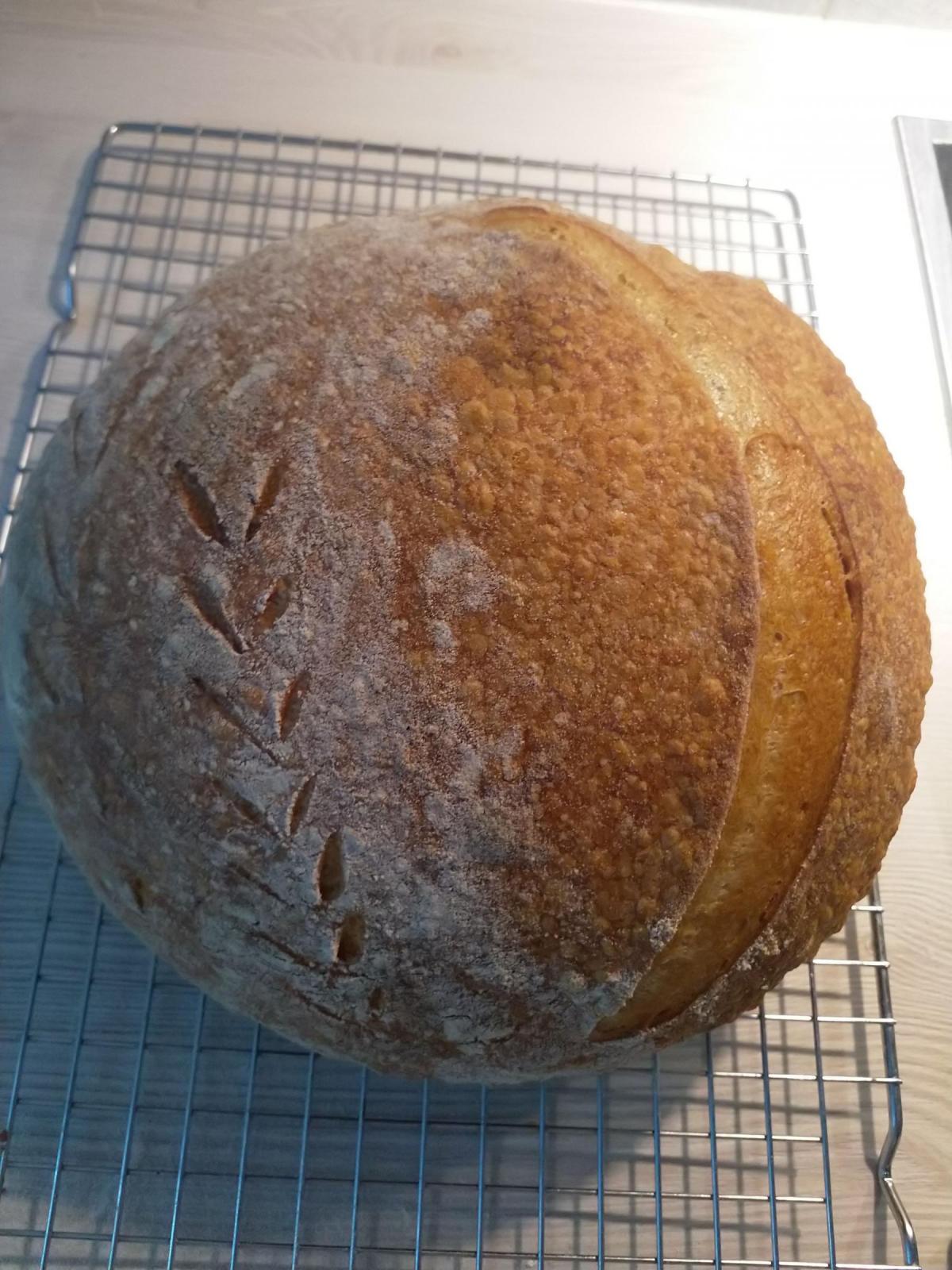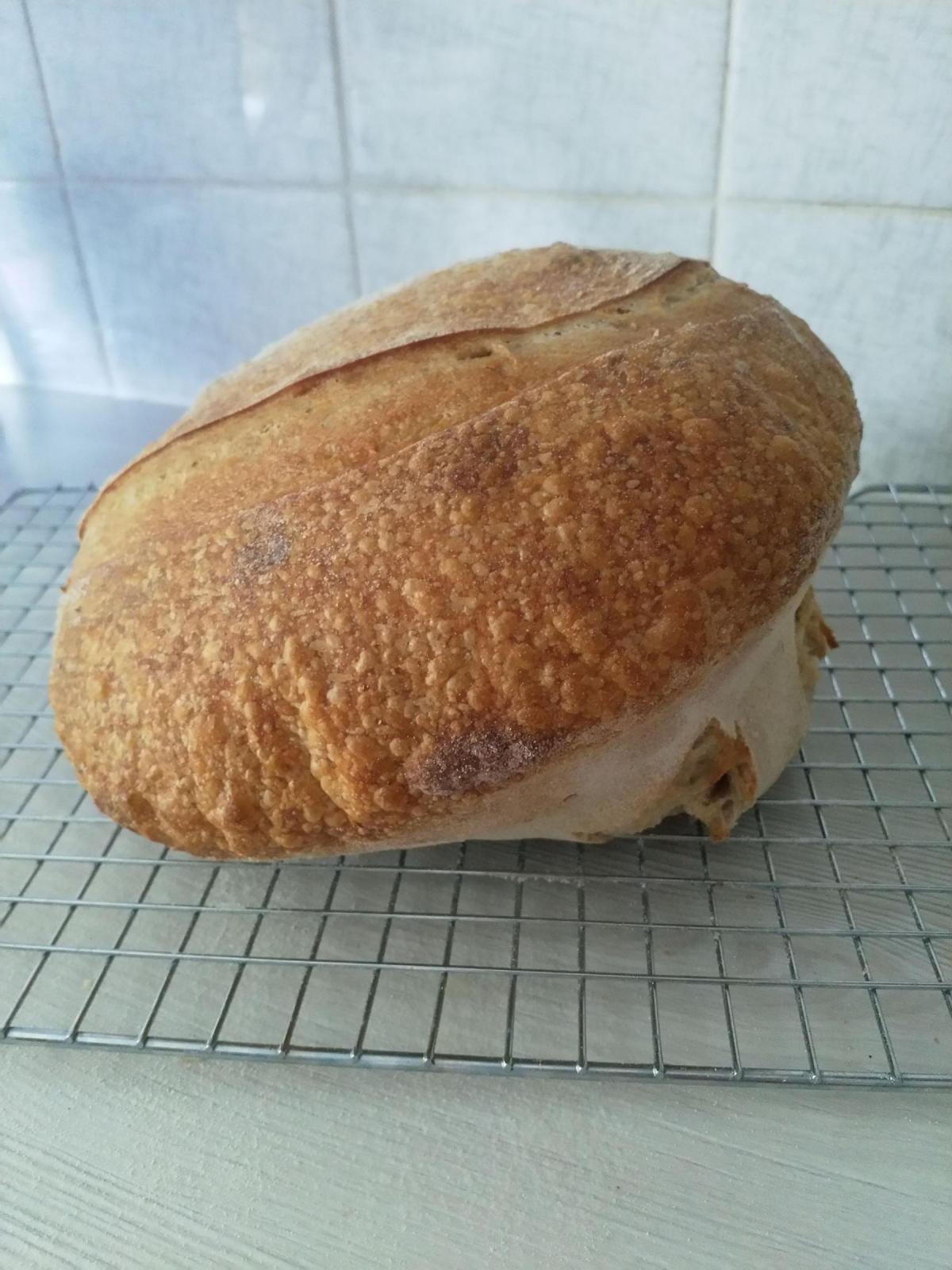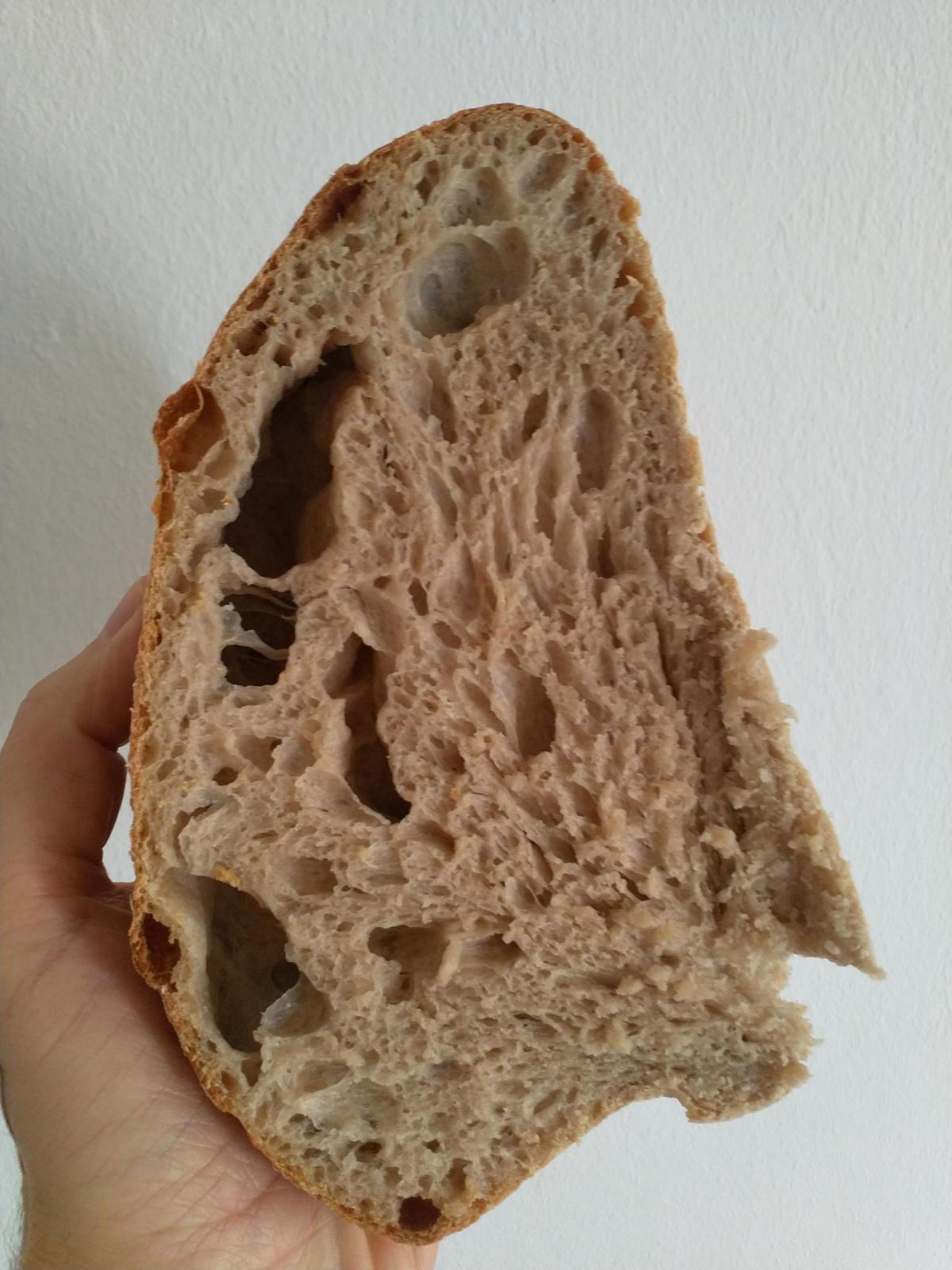Hi guys, I'm a home baker based in Europe and I've been trying to up my sourdough game and get better oven spring but it backfired this weekend.
470g wheat
40g wholegrain rye
375g water
8g salt
100g starter (1part wholegrain rye, 1part wheat, 2 parts of water)
Start levain at 8, start autolyse (no salt) at 11, mix at 1. Regular folds at 20 min intervals for 3 hours. Stretch and fold - one hour, stretch and fold - two hours. Preshape - 20 mins, final shape -> fridge for 12 hours.
I bake for 10 mins on a baking stone with the oven preheated to 250 degrees C, I put hot water in the tray below the stone. After 10 mins I turn the heat down to 200, open the door to let some of the steam escape and bake until crust is nice and brown
While the dough feels good when I shape and fold it, I had two "bottom blow outs" this weekend. What happened? Is the dough still under-proofed? Or even over-proofed? Did I not score enough? Not enough steam?
Any idea? Feedback much appreciated!



the baked loaf bottom?
It does look like the crust was too firm (drying out in the fridge) or set too fast in the oven. Something preventing the spring where it should be. I'd vote for drying out in the fridge creating a thick skin. So how was the loaf stored in the fridge?
Too long sitting in the banneton can do that too. Was it bagged partially or totally in the fridge?
thank you for your swift reply! it was covered with a tea towel in the fridge
i also used more flour when shaping, as I had issues with it sticking to the banetton in the past
I bet you're using a convection oven with top heat. That sets the crust too soon and prevents upward expansion, so it expands out the softer lower part that hasn't crusted over yet.
If your oven has a _lower_ heating element, use that one -- not the top heating element, and not the heating element on the back wall, if there is one there.
You can use the top element during _pre-heat_, to get your stone up to temp. But once you put the dough in, use only the bottom element, and NO FAN.
Also, convection ovens get the air up to temp quickly, but it can take 20 or 30 or 40 minutes to get the stone up to temp. If you have an infrared, "gun" type thermometer, that will tell you the stone's temp.
A relatively cold stone (ie, not preheated enough) will also cause "bottom blow-out."
--
If your oven does not have a lower heating element, only one on the top, or back wall, then you will need a baking vessel, lidded pot, dutch oven, or cloche to protect the dough from the hot air currents. Even an oven-safe bowl turned upside down on the baking stone to cover the dough could work.
Good luck.
Well of course! Many thanks, will try on the "pizza setting" (which is heat from below only) next weekend and report back.
Happy to report that switching to "bottom heat" really helped and I got a decent "ear" for the first time. So thank you for that tip! However, it seems harder to properly brown the bread with bottom heat. Do you guys switch heat source half way or just increase the baking times?
You'll have to experiment. As I understand convection ovens, if the top element is on, the fan has to be running so the top of the oven doesn't get too hot.
You'll need to find a balance so that the inside crumb gets cooked enough before the crust gets too dark. you want to "cook off" enough of the interior moisture so that the crumb is not wet and gummy.
An instant-read probe or pen-type thermometer is good, and you learn what temp you need. For my 90% Whole wheat loaves, with 88% hydration, I look for 209-210 F internal temp.
Also, there needs to be a balance between cooking time and cooking temp. If the crust is not dark enough by the time the interior is done, then bake hotter next time. If the crust is dark, but the interior is not up to desired temp, then bake longer st lower temp next time.
Be careful with top heat as it can darken the crust quickly.
--
After all this you learn that recipes/formulas are mere guidelines, and all have to be adjusted for your local conditions: ambient temp, fridge temp, your specific flour, your water, your starter, your oven. It is as much art and magic as it is science.
Heating up the baking stone with underheat (no fan) only for a looooong time (close to 2 hours), really helps to eliminate some of the problems that I had during my the bake. That way you can bake it about 8 minutes on 250 degrees with lots of a humidity, then open the door, bake for another 20 minutes at 190 degrees and then switch on the fan to get some colour. Thanks for the feedback!
Tha looks great ?